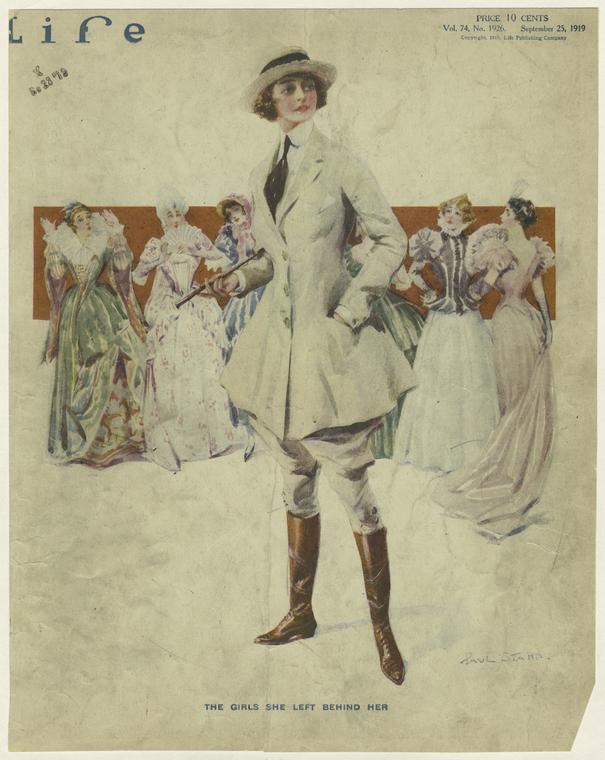I've talked before about my love for fashion plates, but sometimes when I'm rooting around in the New York Public Library's digital collection I stumble upon something I've just got to talk about. For 10 cents in September of 1919, you could buy a magazine with a pretty remarkable-looking cover. Check it out.
The cover is entitled "The Girls She Left Behind Her," and it's pretty stunning. Not only do we have a young lady in what was traditionally a man's riding kit — boots, jodhpurs, and all — she's standing in front of at least six female figures, all dressed in historical garb.
From what I can tell we start with a woman in Elizabethan dress on the far left and progress through the 18th century to the Georgian empire waist dresses all Jane Austen period drama fans know so well. Barely visible in green behind the main figure is what looks like the full bell skirt of a dress spread over a cage crinoline (mid to late 1850s) and then the mutton sleeves of the mid 1890s. Topping it all of with her back turned to us in a stunning pink dress is a woman wearing the fashions of the first decade of the twentieth century.
This is a little early for the extreme changes in fashion that the flappers brought with them, and so the magazine cover is in a way even more remarkable. You can see just how aware the editorial staff of this magazine must have been about the opening up of social conventions regarding dress — and also a woman's place in society — when the central figure of a fashion plate is wearing trousers. Even more interesting, I don't read any censure in this drawing. Rather than a fearful cartoon of how society would fall apart just because a woman pulled on a pair of pants, the artist seems to be making a statement: this is how it is.
I won't go so far as to say this image was intentionally feminist. The illustrator still calls her a girl, and we've got to remember that this pretty white woman who represents beauty ideals of the time is meant to move magazines. Besides my old college professors would scold me for not contextualizing what feminism would have meant in 1919 and instead projecting my own modern ideas onto it. Instead I'll just say that this magazine cover is a fascinating sign of its times.
Now if someone could make me that white skirted riding coat and find me a pair of those boots I'd be a very happy lady.
